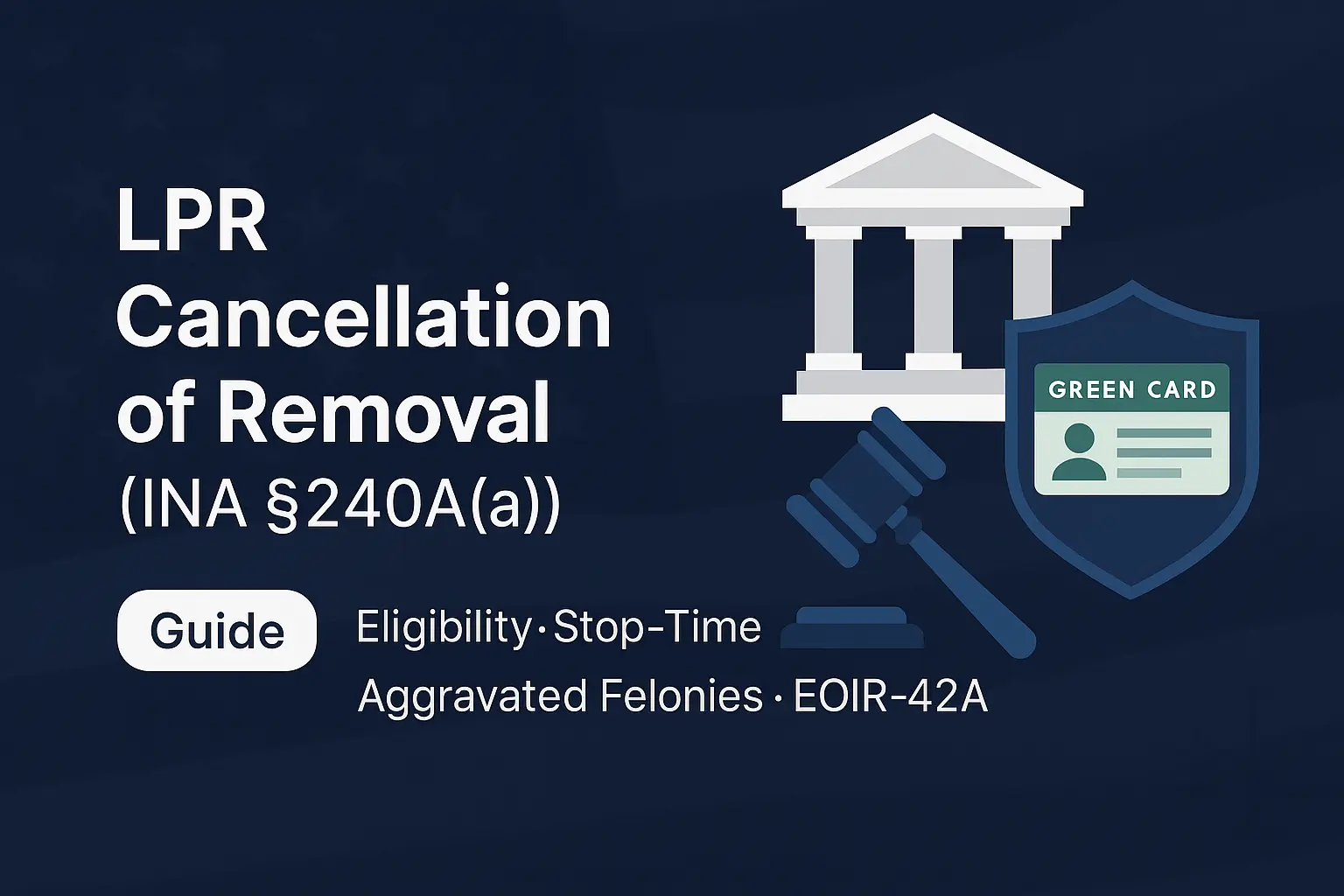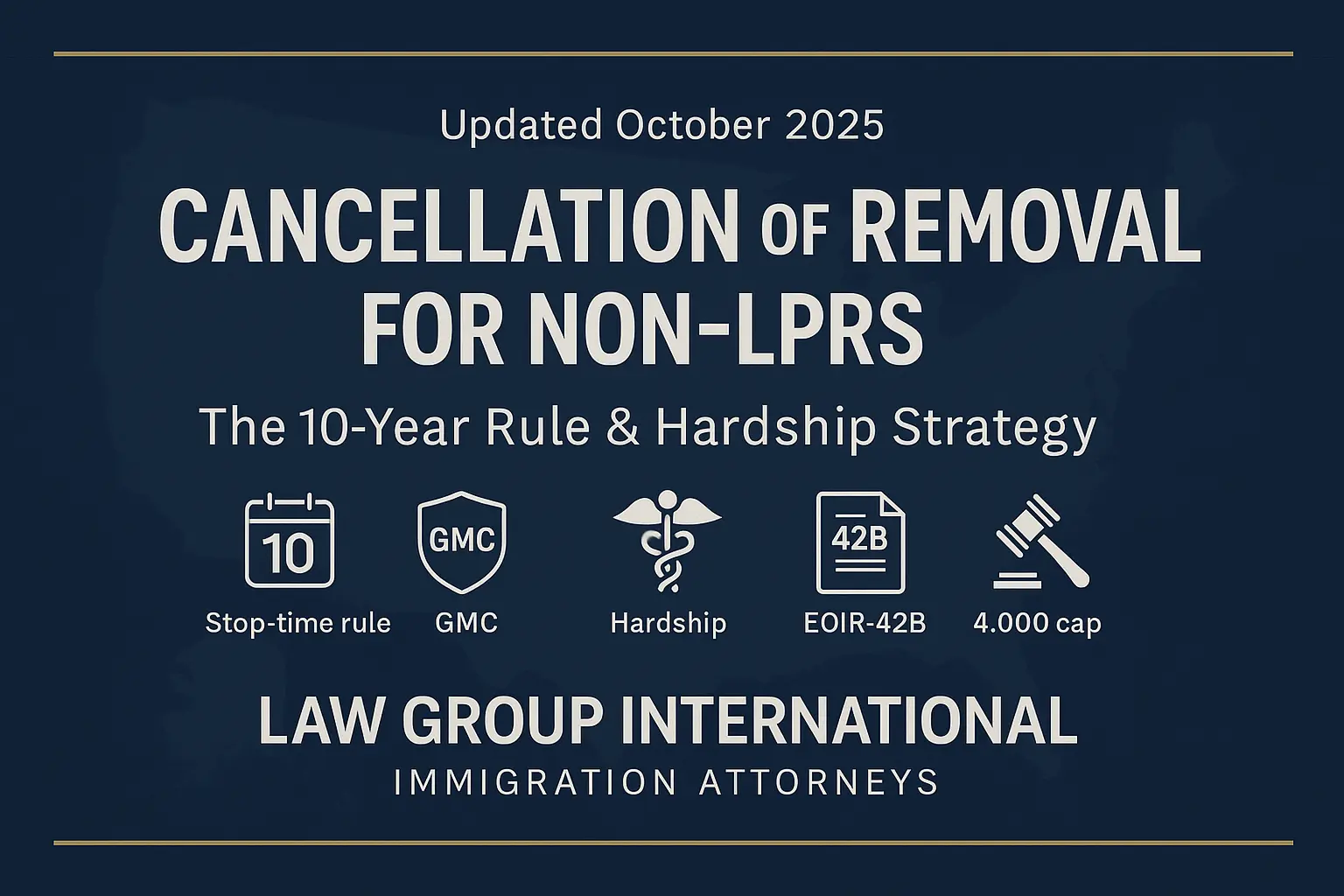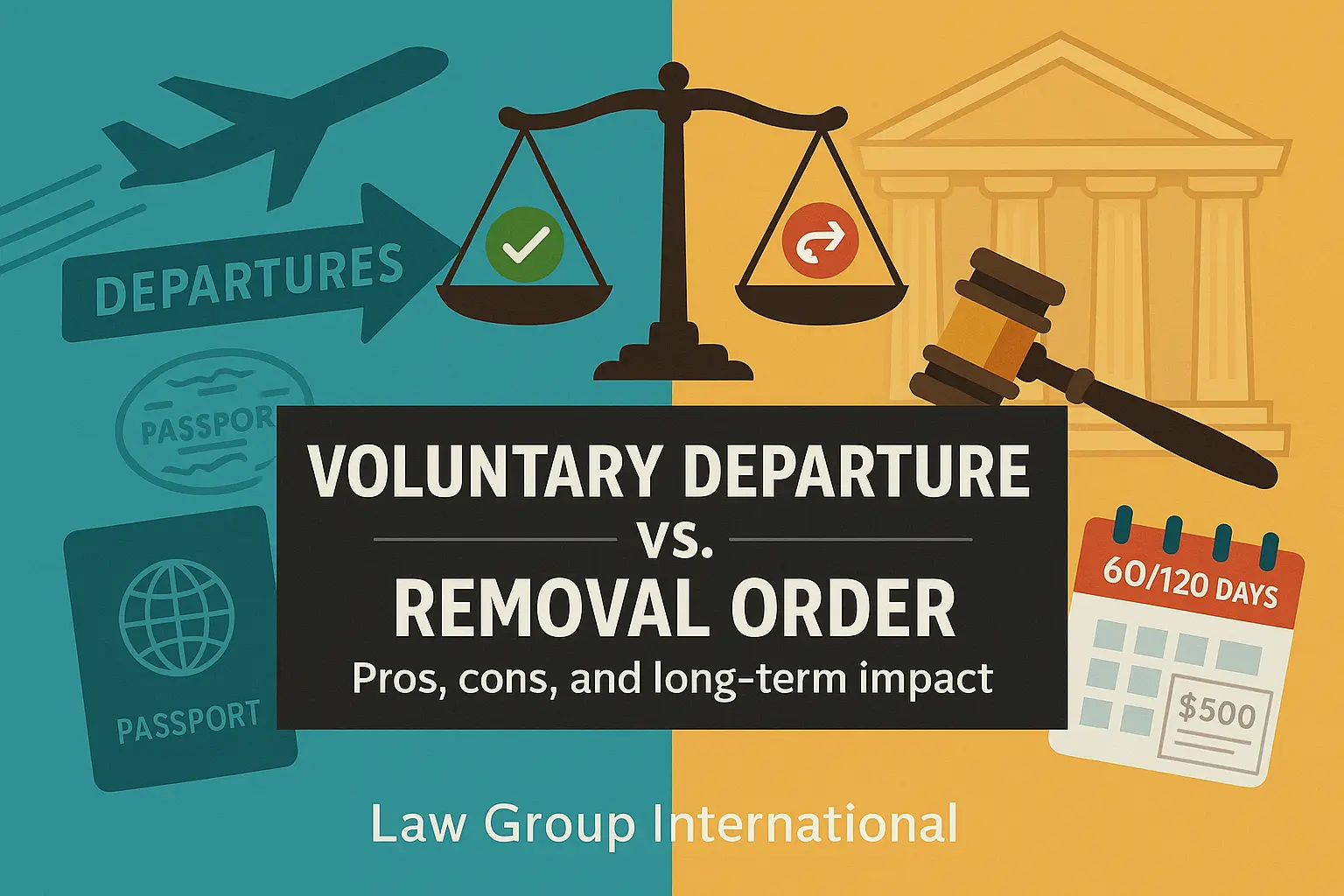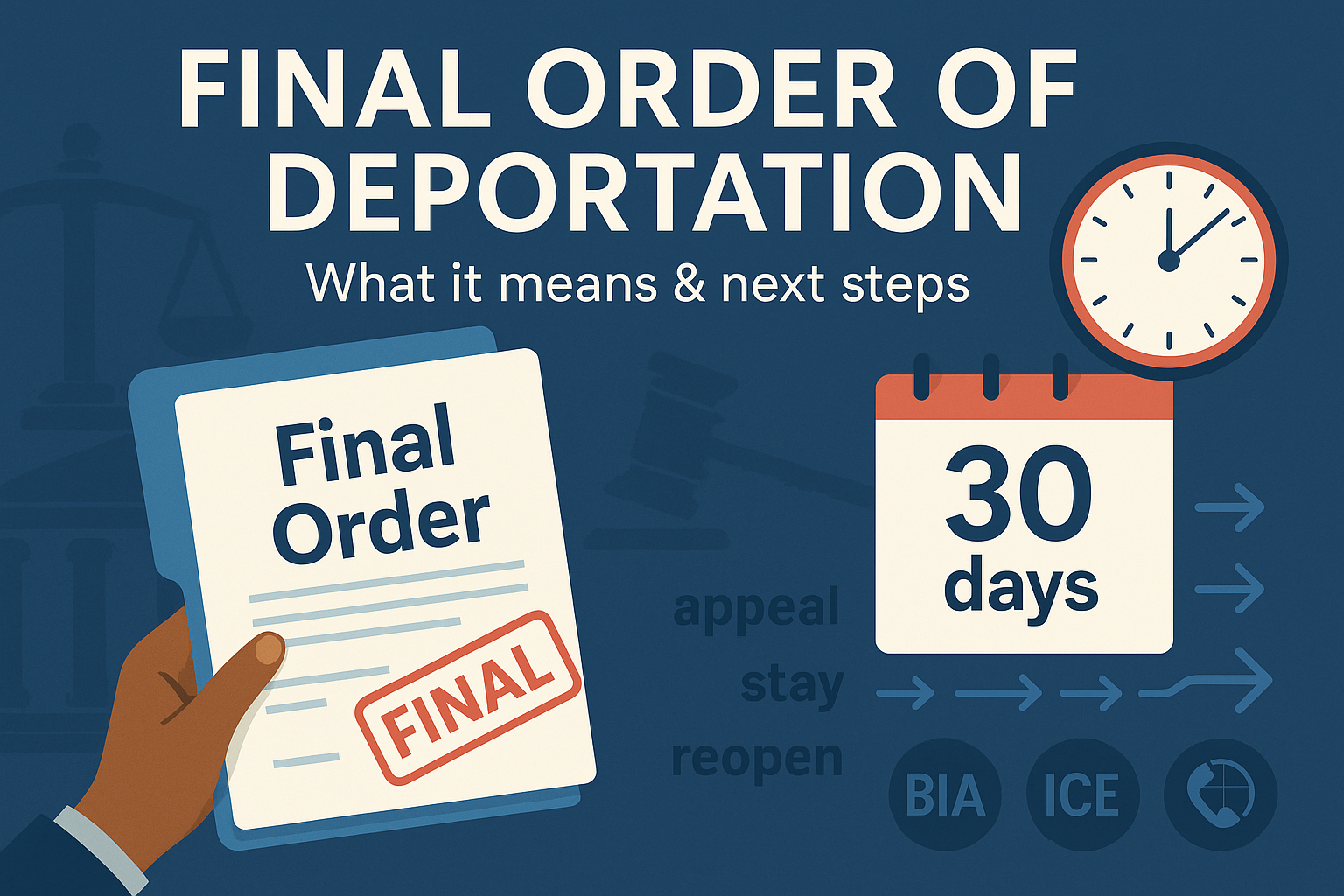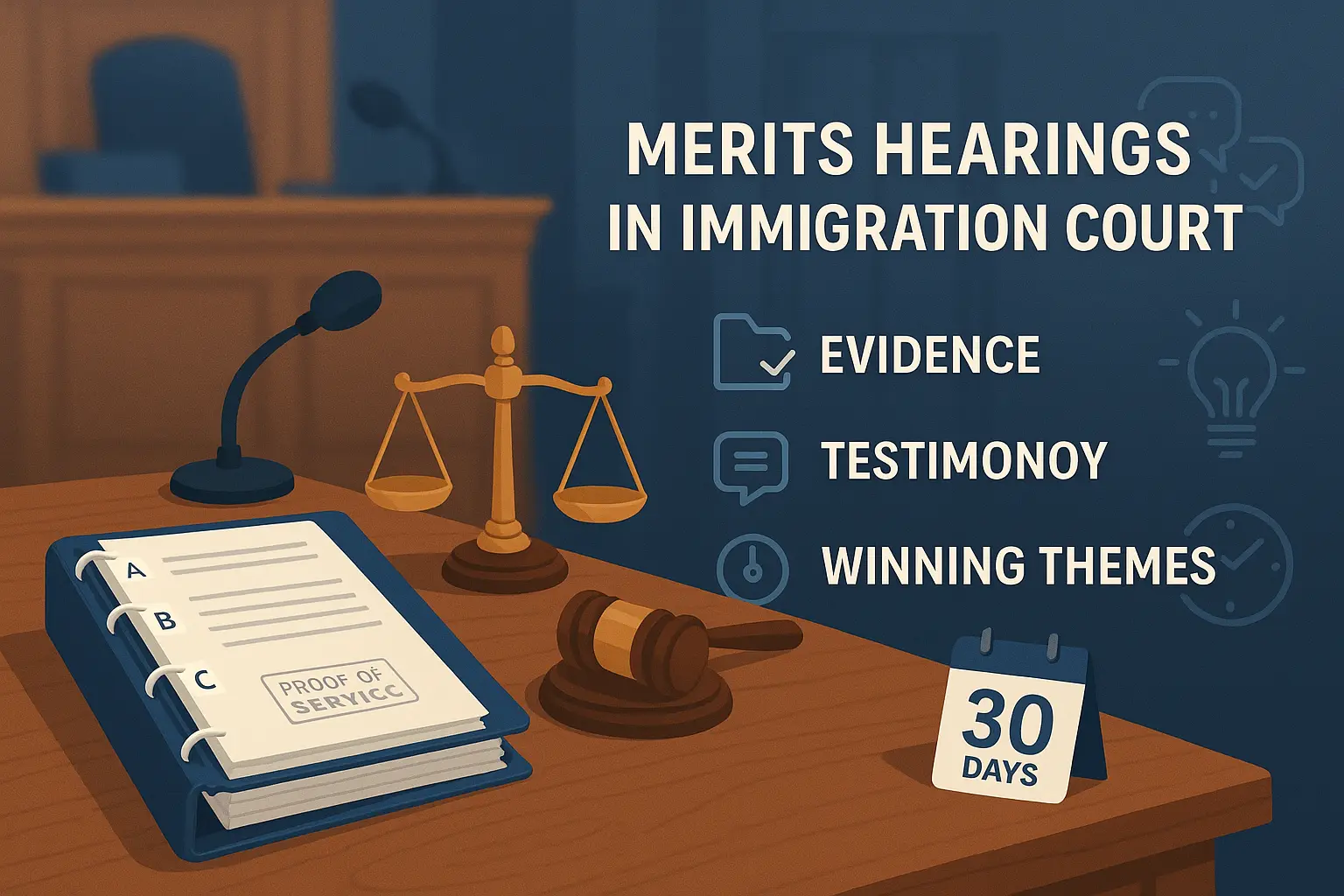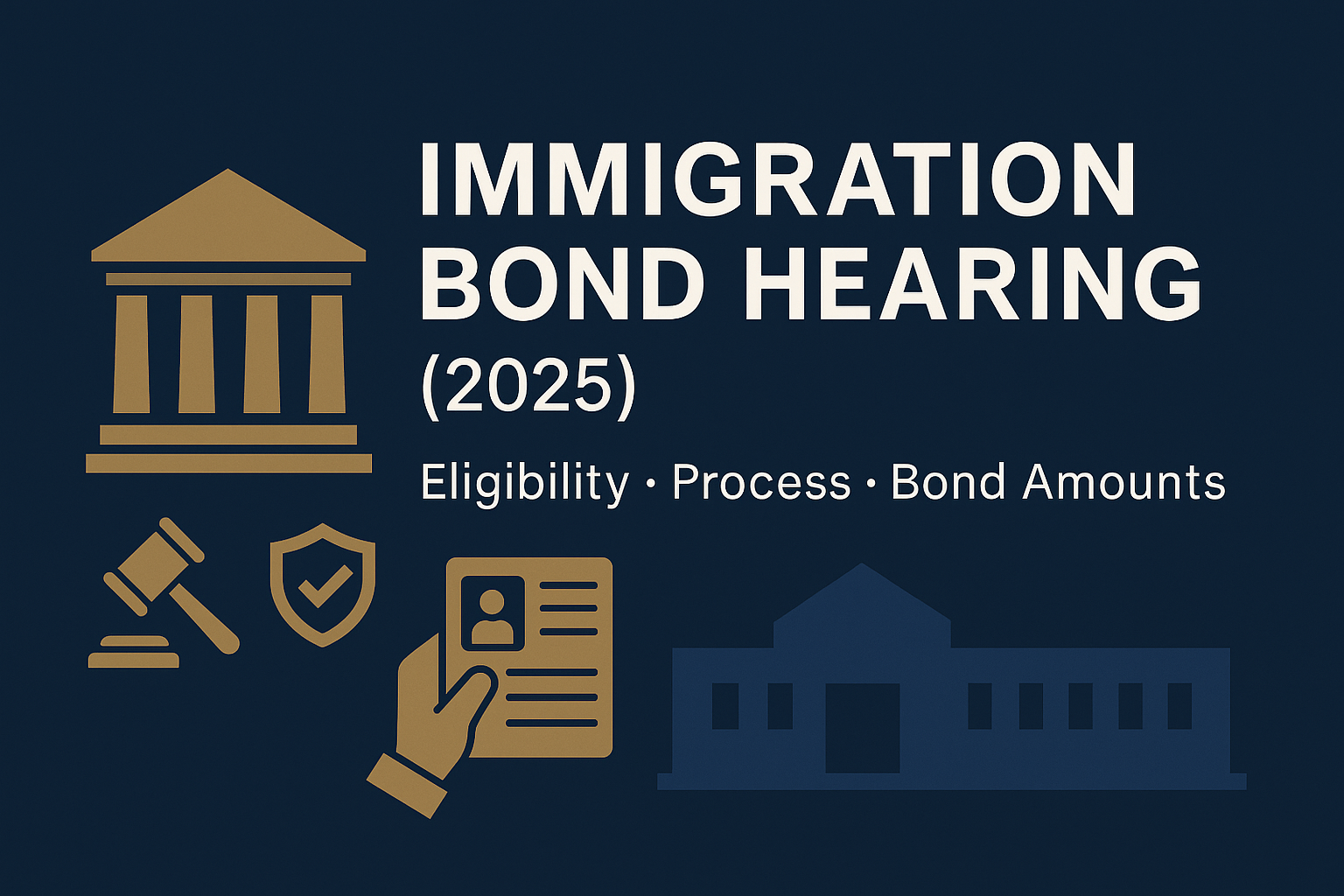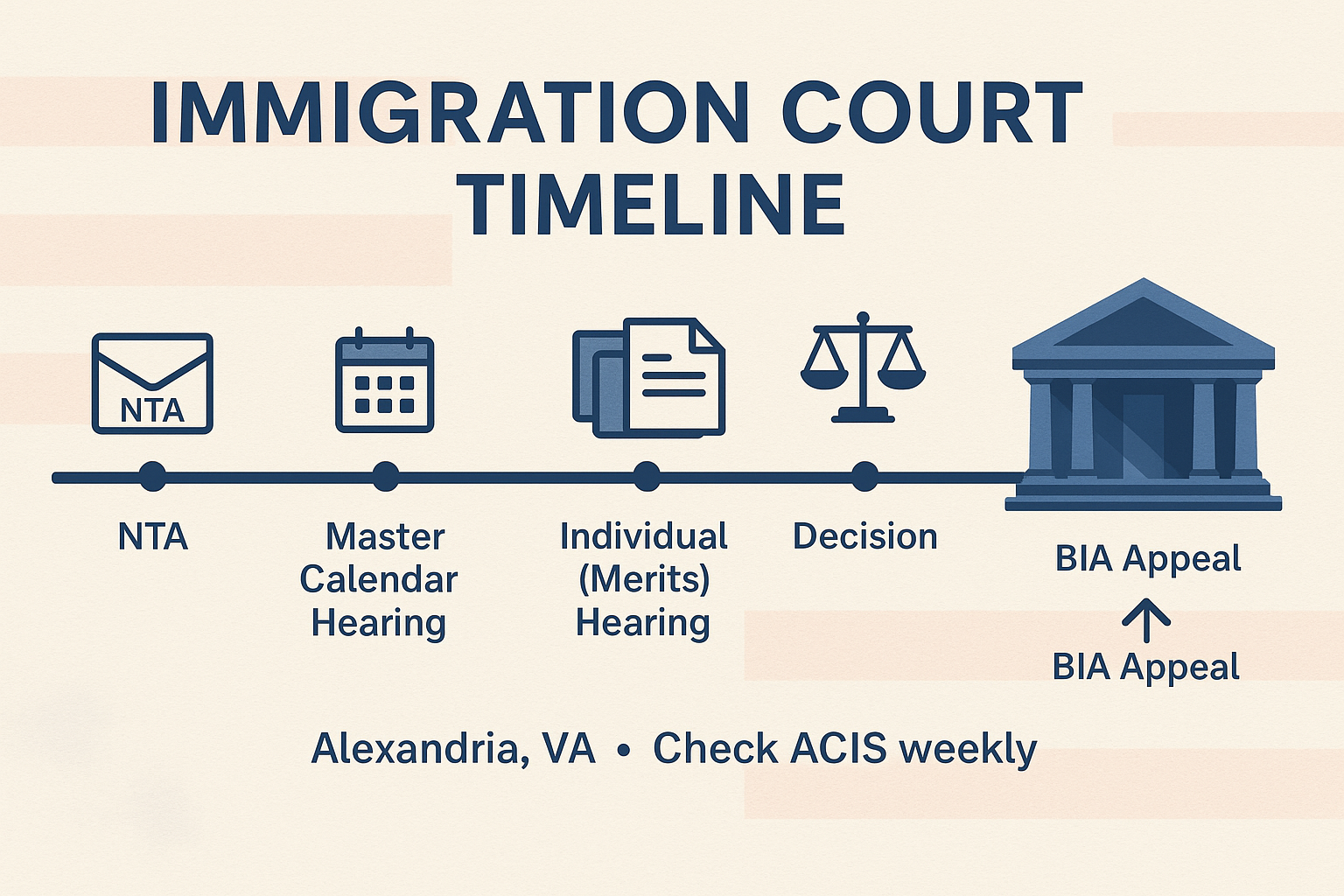What expedited removal means: Can you be deported without seeing a judge?
In 2025, an immigrant in the United States can be detained by ICE and deported in less than 24–48 hours without ever seeing an immigration judge. This is the direct result of the January 20, 2025 executive order that dramatically expanded the use of “expedited removal” nationwide.
For the first time in U.S. history, expedited removal is no longer limited to border zones or recent arrivals. It now applies anywhere in the United States to anyone who cannot prove two full years of continuous residence.
At Law Group International, we know how stressful and confusing these changes are for immigrant families. This guide explains what expedited removal is, how the policy changed in 2025, who is at risk, what documents can protect you, and what steps you can take right now to stay safe.
What Is Expedited Removal?
Expedited removal is a fast-track deportation process created by Congress that allows ICE or CBP officers to deport certain noncitizens without a hearing before an immigration judge.
In plain terms:
Expedited removal allows ICE or CBP to detain and deport a person within 24–48 hours, with no court date, no judge, and extremely limited access to legal help.
Key characteristics
- No Notice to Appear (NTA)
- No immigration judge
- No right to present evidence or defenses
- No chance to apply for most immigration benefits
- Only exception: claiming credible fear for asylum screening
Regular Removal vs. Expedited Removal
| Regular Removal Process | Expedited Removal |
| Notice to Appear (NTA) issued | Immediate processing by ICE/CBP |
| Immigration judge hearing | No judge hearing |
| Right to attorney representation | Very limited access to attorneys |
| Can take months or years | 24–48 hours |
| Opportunity to apply for relief | Only credible fear screening |
| Can present evidence | No defense presentation |
How Expedited Removal Changed in 2025
Previous Policy Limitations (Before January 2025)
Before 2025, expedited removal was limited in very specific ways:
- Applied only within 100 miles of the border
- Only for people encountered within 14 days of entering the U.S.
- Many areas were considered “sensitive locations,” including schools, churches, and hospitals
- ICE needed to prove the person recently entered without inspection
Under these limitations, millions of immigrants inside the U.S. were not eligible for expedited removal.
New Trump Administration Policy (January 20, 2025)
On January 20, 2025, a new executive order removed all major restrictions. The policy now allows ICE to apply expedited removal to nearly anyone in the country.
The order made three critical changes:
- Nationwide Expansion
Expedited removal now applies anywhere in the United States, not just border zones. - Elimination of the 14-Day Rule
ICE no longer has to prove you entered recently. The 14-day entry window has been removed. - Two-Year Proof Requirement
Immigrants must prove two full years of continuous physical presence to avoid expedited removal.
Why this matters
This change immediately put millions of immigrants at risk, including visa overstays, undocumented immigrants who have lived in the U.S. for months, and people with pending applications.
Who Is at Risk of Expedited Removal in 2025?
High-Risk Groups for Expedited Removal
Undocumented immigrants who entered without inspection
If you cannot prove two years of residence, ICE can use expedited removal anywhere in the U.S.
Visa overstays
If your visa expired and you stayed, you are subject to expedited removal unless you have two years of documented residence.
People with less than two years of physical presence
Even if you’ve lived in the U.S. for 1 year and 11 months, you are at risk.
Those with prior deportation orders
ICE may use expedited procedures to remove you quickly.
People who reentered after deportation
These individuals may face reinstatement, which is also fast-track removal.
People with pending immigration applications
Having a pending case does not protect you from expedited removal unless you can show two years of residence.
What Documents Prove 2 Years of Continuous Residence?
To avoid expedited removal, you must show documented proof that you have been inside the U.S. for 24 consecutive months.
Examples include:
- Lease agreements or mortgage statements covering 2+ years
- Utility bills (electricity, gas, water) from the last 24+ months
- Bank statements showing your U.S. address during that period
- Employment records (pay stubs, W-2s, tax returns)
- School records for you or your children
- Medical records with dates
- Receipts or official mail showing continuous presence
Even brief trips abroad may break the two-year requirement.
Expedited Removal: Frequently Asked Questions
- Can expedited removal happen without any warning?
Yes. ICE can detain and deport a person within 24–48 hours with no advance notice, no court hearing, and no NTA. The process moves extremely fast.
- What happens if I claim fear of returning to my country?
You will be sent to a credible fear screening with an asylum officer. If you pass, your case goes to immigration court. If you fail, deportation continues.
- Can I have a lawyer during expedited removal?
You may contact an attorney, but ICE is not required to wait for your lawyer or delay deportation. Most removals occur too quickly for legal intervention.
- Does expedited removal apply to people with pending immigration applications?
Yes. A pending asylum application, adjustment application, or work permit renewal does not protect you unless you have two years of documented residence.
- What is the 2-year continuous residence requirement?
You must show you have lived in the U.S. for at least 24 months before the ICE encounter. Documents must prove uninterrupted residence.
- Can U.S. citizens or green card holders be subject to expedited removal?
No. But USCIS has documented multiple mistaken detentions in 2025. Carry proof of status at all times.
- How fast does expedited removal happen?
Mexican nationals: often 24–48 hours
Others: 3–7 days
There is no waiting period and no hearing.
- What happens to my property and family if I am deported through expedited removal?
You will likely not have time to arrange childcare, finances, or belongings. You must prepare an emergency plan in advance.
How to Protect Yourself from Expedited Removal
Step 1: Gather and Organize Proof of Residence Now
- Collect leases, utility bills, and bank statements from last 24+ months
- Make paper and digital copies
- Organize documents in chronological order
- Store copies with a trusted family member or attorney
- Keep a small packet of documents with you at all times
- Highlight or underline dates clearly
Step 2: Create a Family Emergency Plan
Designate Emergency Contacts
- Choose a trusted adult for childcare
- Provide written authorization (preferably notarized)
Financial Planning
- Give someone power of attorney
- Ensure someone can access bank accounts and pay bills
Legal Preparation
- Save contact information for an immigration attorney
- Carry a “Know Your Rights” card
- Teach family members how to respond to ICE
Children’s Preparation
- Update school emergency contacts
- Teach children emergency phone numbers
- Ensure they know not to answer immigration questions
Step 3: Know Your Rights During ICE Encounters
| Do | Don’t |
| Ask, “Am I free to leave?” | Open the door without a warrant |
| Say, “I want to speak to my lawyer.” | Answer questions about status |
| Ask to see a judge-signed warrant | Sign documents you don’t understand |
| Remain silent | Lie or present fake documents |
| Document the encounter | Physically resist |
| Show valid proof of residence | Show fraudulent documents |
Step 4: When to Consult an Immigration Attorney
You should consult an attorney immediately if:
- You have less than two years of documented residence
- You have a pending immigration case
- You’ve had contact with police
- You have a prior deportation order
- You received an NTA
- You work in a high-risk industry (construction, agriculture, restaurants)
Law Group International represents clients across the U.S. facing expedited removal and deportation. Our attorneys can evaluate your risks, guide you through document preparation, and build legal strategies to protect your family.
Expedited Removal Statistics and Data (2025)
| Metric | 2024 (Biden) | 2025 (Trump) | % Change |
| Expedited removals (monthly avg.) | 15,000 | 42,000 | +180% |
| Average time to deportation | 45 days | 2 days | -95% |
| Geographic coverage | 100-mile border zone | Entire U.S. | National |
| ICE detention population | 39,000 | 66,000 | +69% |
| Arrests without criminal record | 42% | 59% | +17 pts |
Sources: DHS, ICE, Migration Policy Institute, American Immigration Council (2025).
What to Do If You’re at Risk of Expedited Removal
- Expedited removal can now happen anywhere in the U.S.
- Deportation can occur in 24–48 hours
- You must prove two years of continuous residence to avoid it
- The only exception is a credible fear claim for asylum
Time is your most valuable asset.
At Law Group International, our deportation defense team helps clients:
- Document continuous residence
- Prepare family emergency plans
- Understand their legal rights
- Develop strategies to avoid expedited removal
- Defend their cases in immigration court
If you believe you are at risk, don’t wait for ICE to knock on your door.
Schedule a confidential consultation with Law Group International today.
Explore More Immigration Topics
Waivers that Matter in Court
November 11, 2025
Cancellation of Removal for LPRs
October 28, 2025
Cancellation of Removal for Non-LPRs
October 19, 2025
Deportation Defense in Virginia & DC: Complete Guide
October 17, 2025
Voluntary Departure vs. Removal Order
October 7, 2025
What Is a Final Order of Deportation?
October 2, 2025
Merits Hearings in Immigration Court
September 30, 2025
Immigration Court Timeline: From NTA to Appeal
September 24, 2025


